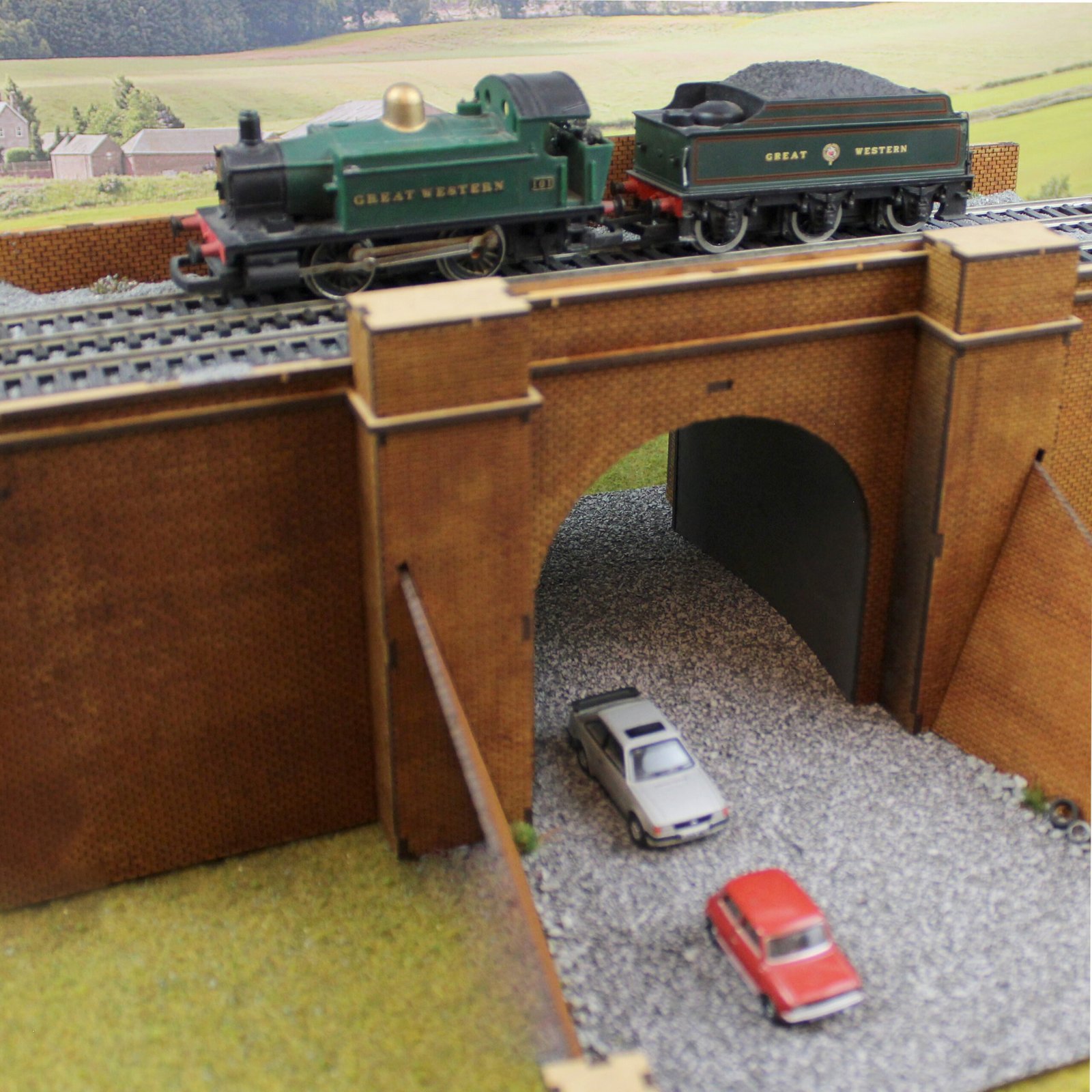![]()
When it comes to model railway layouts, there are thousands of tools you can choose from. It can be easy to get lost in the myriad of modelling and craft tools you can buy and lose sight of the fact that you only need a couple essentials to get started, and even to build advanced model railway layouts. We will say that it is best to invest in a couple, sturdy and high-quality tools, than buy a lot of tools that are less premium. You want to make your tools last and get more value for your money. That being said, we have compiled a list of tools every model railway enthusiast should have in their toolbox, from beginners to seasoned modellers.
Retractable Craft knife
You will be using your craft knife for everything; from cutting paper, card and plastic to electrical tasks. It also good for carving into modelling foam. We recommend you invest in a good retractable craft knife with replaceable blades.
Small headed hammer
Sometimes only a hammer will be able to fix whatever you are dealing with. As model railways are intricate with a lot of delicate details, we recommend you opt for a small headed hammer over a regular sized building hammer so that you can get into all the little corners and maintain control when operating the hammer. You might need to realign track pins, or work on any other aspect of the delicate metals that you will be working with when building your model railway layout.
Multi-meter
Electrics are the heart of your model railway, so a trusted way of measuring and testing current, voltage and resistance is a must. If you have a break in a wire or loss of power, then a good way to check it is a Multi Meter.
Pliers
Having a variety of pliers at hand is an essential when creating and maintaining your model railways. From holding delicate pieces in place while you solder or glue them or passing wires through holes in the baseboard and under track, and working with difficult to reach and intricate areas. You can find sets of pliers with different noses, which is a safe option and ensures you will always have the correct type of plier for your needs. In Martyn’s toolbox he carries flat nose pliers, box joint round nose pliers, and box joint snipe nose pliers.
Rail cutters
Investing in a pair of dedicated model railway track cutters is a good idea, as they are very handy to have around, and are a perfect addition to use alongside the general-purpose pliers.
Soldering iron
Once you are working on more serious and complicated model railway layouts, you might find that you need a soldering iron. It’s important that you get a 25W or 30W soldering iron, as any smaller iron won’t heat wire and track efficiently, and anything bigger may melt your rails.
Mini hole punch
This is a tool that will come in surprisingly handy, and you may already have one lying around at home somewhere. You’ll be thankful you have one when you’re banging in small nails such as track pins. Holding a tiny pin or nail is much easier when you have a small hole punch, and it distances the hammer head from delicate objects that are close by to the area you are hammering.
Straight edge ruler
This one seems pretty obvious, but is often overlooked, and you won’t realise you need one until you actually need one on the spot.
Point syringe kit
When applying glues to small and intricate locations, it’s a lot easier to do so using a syringe than a brush. It’s much neater using a precision syringe and the thin points can get into tiny cracks and crevices without making a mess and without risking glue dripping onto areas you don’t want to glue!
Cutting mat
You will want to avoid cutting anything on surfaces you don’t want to damage like your worktop or the family dining room table. A cutting mat is a simple solution to this.
Hack saw
Sometimes a good pair of scissors just won’t do the job, and you need something stronger and sturdier to cut through track, slots for wiring and delicate adjustments to models.
Screwdrivers
Screwdrivers are another obvious addition to your toolbox, and you probably already have some at home. However, for model trains you will want a precision watch makers or jewellers set of screwdrivers, alongside your standard set of electrics screwdrivers.
Brushes
From painting your scenery to applying glue, you will find that you need a solid selection of brushes. Any brushes will do for scenery, but try to look for sable hair brushes for building paintings and models as these retain their shape and hold a fine point much better.
Tweezers
Tweezers are great for holding and fine-positioning delicate items, pulling wires through holes and removing splinters when making baseboards.
Sanding equipment
A set of quality files will be an invaluable tool when building your model railway layout. You can also opt for sandpaper, but you have less precision and control when using sandpaper, so we recommend you invest in a high-quality set of files which will last forever.
Drills
You will find yourself needing to drill small holes when modelling. You will need a pin vice to drill holes using small bits, as power tools are not controllable enough for the delicate handiwork that goes into modelling. You can buy a single tool that is double ended, which will provide you with the full range of sizes.
This is only a small list, with the essential tools included. There is so much more you can look into and invest in when creating model railway layouts. The important thing to keep in mind is that you don’t need all the tools on the market. Find what tools you enjoy using and what work best for you and stick to those. Happy modelling!


